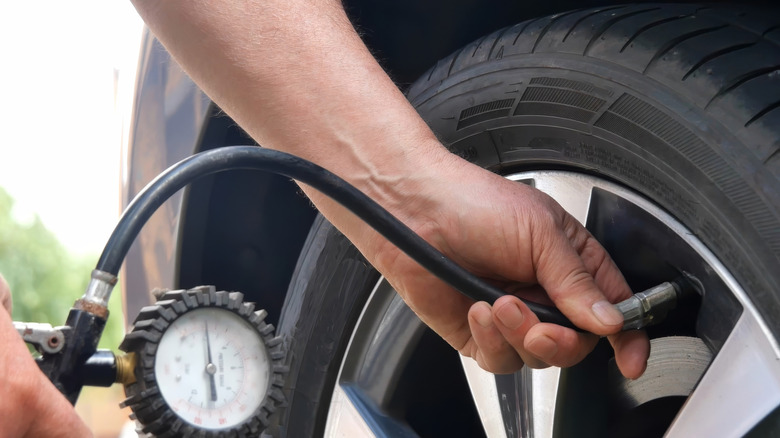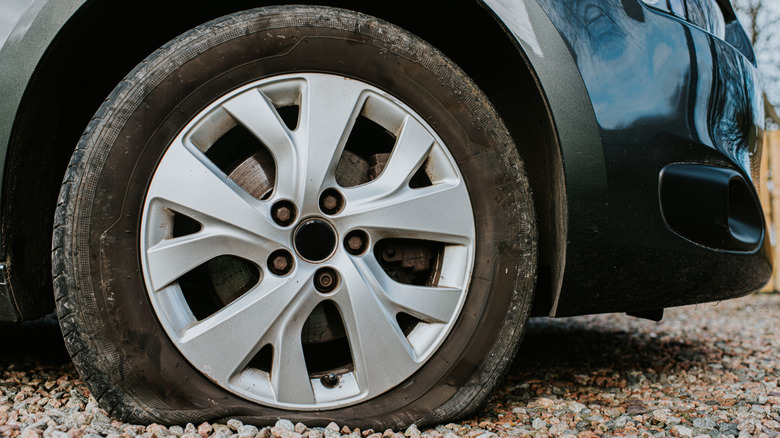They don’t get as much attention as high-tech, advanced driver assistance systems (ADAS), but many people actually consider tires to be the most important safety feature on your car. After all, those four rings of rubber are the only parts of your car that touch the road. Maintaining proper air levels is one of the best ways to get the most mileage out of your tires, which is where valve stems come into play.
Valve stems are those small rubber tubes sticking out of your wheel that allow you to attach an air hose for inflation purposes. Unfortunately, valve stems can also let air out if they’re damaged, whether by an accident or routine wear and tear. Because they’re usually made of rubber, which can dry out and crack as the years pass, valve stems can also be damaged by the passage of time. Meanwhile, metal valve stems are subject to corrosion.
In addition, most modern cars have automatic tire-pressure monitoring systems (TPMS) to let you know if one of your tires needs air. The TPMS sensors are often attached to the valve stems. So, another potential worry is that a damaged valve stem can compromise the TPMS sensor.
The bottom line is that underinflated tires can reduce your car’s fuel economy, impair its handling, and even lead to dangerous blowouts. It’s a serious issue, and the NHTSA reports hundreds of deaths each year — including 646 in 2023 — due to tire-related causes.
How do valve stems work?
A compact SUV tire is different from a heavy-duty truck tire. Likewise, there are also different kinds of valve stems for different applications. Basic rubber valve stems are typically used for light-duty vehicles, while bigger machines, like commercial trucks, often use stems specifically engineered for the higher air pressures those vehicles demand. When competition calls, you can opt for high-pressure metal valves that clamp into place rather than merely snapping in — just remember to avoid using special valve caps to cheat the rules like this NASCAR team.
That said, most valve stems work in pretty much the same way. Inside the outer housing of the stem is the valve core, and that’s the heart of the component. Valve cores tend to be made from either brass or nickel, though nickel is more common for modern valve cores. That’s because valve stems with TPMS sensors are built with aluminum — brass cores can react with that metal, causing corrosion and necessitating the use of nickel cores.
So, how do valve stems work? The valve core features a small, spring-loaded pin that can be depressed by the fitting on an air-supply hose. That allows air to flow into the tire. A manual tire-pressure tool works similarly by depressing the pin to let air out. When you’re done adjusting your tire’s air pressure, the spring causes the pin to move back into place, sealing the tire.
How can you tell when to replace your valve stems?
A typical valve stem can last for between four and six years, although that timeline can vary. Extreme temperatures — hot or cold — and exposure to direct sunlight can significantly reduce the lifespan of a valve stem. Failure to replace the valve stem cap can also cause the stems to fail prematurely. That exposes the valve stem core to dirt, road salt, debris, and water, all of which can be harmful.
To prevent problems, it’s a good idea to check valve stems routinely for cracked or degrading rubber and rusty metal. Valve stem issues can also be the cause of an otherwise hard-to-find tire leak, while also making it difficult to inflate the tire in response. Fortunately, there’s also a simple lifehack for identifying a leaky valve stem. To do so, spray a mixture of soap and water onto the valve stem. If air bubbles begin to appear around the stem, it’s a good sign that there’s a leak. If worse comes to worst, here’s everything to know about fixing a flat.
Now, from a practical standpoint, it can be a good habit to replace your valve stems every time you replace your tires, especially since they only cost about $10. Keep in mind that a TPMS sensor is more expensive, and the average cost to replace one usually falls between $314 and $368. The good news is that TPMS sensers generally last for between five and 10 years, meaning you shouldn’t have to replace them very often.







